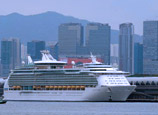
Mbugua noted that passenger revenue which contributes 90 percent of turnover declined from 1.1 billion dollars reached in the 2011/2012 financial year to one billion dollars in 2012/2013 financial year.
"However, total cargo grew by 17.8 percent due to introduction of freighter plane which operates between China and Nigeria," Mbugua said.
According to the International Air Transport Association, 2012 was a tough year for the global aviation industry as seven major airlines went bankrupt, while another four were bailed by their national governments.
He added that despite the difficulties, Kenya Airways managed to add new destinations including Mumbai in India, Kilimanjaro in Tanzania and Eldoret in northwest Kenya.
"However, Kenya Airways suspended operations into Muscat in Oman, Jeddah in Saudi Arabia and N'Djamena in Chad," he said. He noted that during the last one year, the fleet size increased from 33 to 42.
"But the long term goal is have 103 aircraft by end of 2023," Mbugua said. KQ said that it will continue to use code sharing with strategic partners in order to access destinations they don't currently reach.
He noted that the airline's biggest expense is fuel, which cost the company 480 million dollars in 2012/2013. "We are therefore considering mitigation plans including setting up a fuel procurement company," said Mbugua.
The financial results also indicated that the airline performed better in the second half compared to the first half of the 2012/ 2013 financial year. "We are therefore optimistic that the momentum will continue into 2013," he said.
The airline has plans to add two additional cargo planes in order to satisfy growing demand while the 787 Boeing Dreamliner is expected in March 2014.
Mbugua said that in the second half of 2013, the airline will add three new destinations including Livingstone in Zambia, Abu Dhabi in the United Arab Emirates and Blantyre in Malawi.

















 Developer razes historic Guangzhou structures
Developer razes historic Guangzhou structures


![]()
